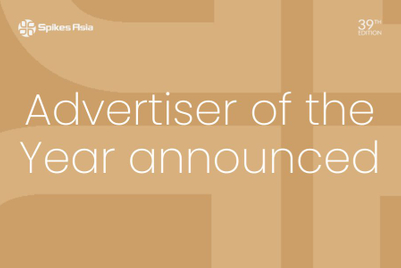
The biggest barrier to great creative work is corporate structure. The best way around it starts at the top.
This may sound contentious. After all, aren’t a client’s vision, experience, and ability to buy powerful work important? Not to mention their agency’s strategic and creative talent? Undoubtedly, but after many years in the business (most recently as a consultant to both agencies and clients) I am convinced that if you had to rank all the various impediments to getting good work made, then structure sits at the top of the list.
While not all clients are bold, or have what Sir John Hegarty would simply call ‘taste’, most want to do the right things. Indeed, despite perennial agency mumblings, there are not many total fools out there.
Likewise, even the most pedestrian seeming of agencies have good people in them fighting the good fight. That they have all read the same stuff and have similar tools and processes is not necessarily a bad thing. We live in a time when there has never been more evidence as to how and why communications work. Everything is out there, so people quite naturally come to broadly shared (and broadly correct) approaches and goals.
Yet too much work remains poor and therefore expensive (as it requires more media spend to work). In the UK, for example, consumer agreement with the TGI (Target Group Index) statement ‘the ads are as good as the programmes’ has been in steady decline since the early 1990s. In fact, it's a ski slope.
But why, when there is the talent, understanding and desire to do good work on both agency and client sides?
I think the problem starts with marketing being halfway up the corporate tree. Only rarely on executive management teams, almost never on boards.
So creative briefs and work (sometimes even company purpose) get developed midway up the corporate pecking order and then shuffled (often timidly) upwards for final approval.
Faced with work for which they have often seen no background thinking and have had no hand in developing, senior execs frequently reject it or ask for numerous amendments. And, given that they are the ones setting the real strategy for the company, they're not always wrong.
This situation is not just expensive in terms of time and fees; it is even more so in terms of slowness to market and often the ultimate effectiveness of the work. Having been tampered with so extensively, the work often loses its soul, or it lacks the truth of what the company is really about.
So how to remedy? I think it pays to think about the most successful client-agency relationships and the hugely valuable brands they have built. Think of Steve Jobs at Apple working with Jay Chiat and Lee Clow of TBWA, Phil Knight at Nike and his relationship with Dan Wieden of Wieden Kennedy. Think—if you are senior in your agency or client company—about the best, most productive client-agency relationships you have had. Almost inevitably they started at the top. As a result, they were quicker, more productive, more creative and, ultimately, far more effective.
But unless you are going to leave it to the vagaries of character and chance (never wise) how do you make sure it happens this way for your relationship? If you are on the client side and recognise this situation, then the best move you are likely to make is to ask your CEO and management group to get involved at the start of the process, rather than the end. Co-creating the brand brief with you and your agency. This will be by far the best use of your quotient of corporate bravery for the year. Go and talk to them. Share this article with them if it helps. If they are part of the process early on, things will become inestimably easier later on when they see the work. I promise.
If you are on the agency side, it’s time to gird your loins and use your quotient of fiscal bravery. Say to all prospective new clients, 'This is how we work'. Develop a process to match. Do not deviate or cave in. Because again, a strong point of view on the best way to work at the start of a relationship will be immensely valuable down the line.
Charles Wigley is a UK-based brand and communications consultant, and the former chairman of BBH Asia. He published this column first on LinkedIn.



.jpg&h=334&w=500&q=100&v=20250320&c=1)


.png&h=334&w=500&q=100&v=20250320&c=1)

.jpg&h=334&w=500&q=100&v=20250320&c=1)
.png&h=334&w=500&q=100&v=20250320&c=1)
.png&h=334&w=500&q=100&v=20250320&c=1)

.png&h=334&w=500&q=100&v=20250320&c=1)




.jpg&h=268&w=401&q=100&v=20250320&c=1)


